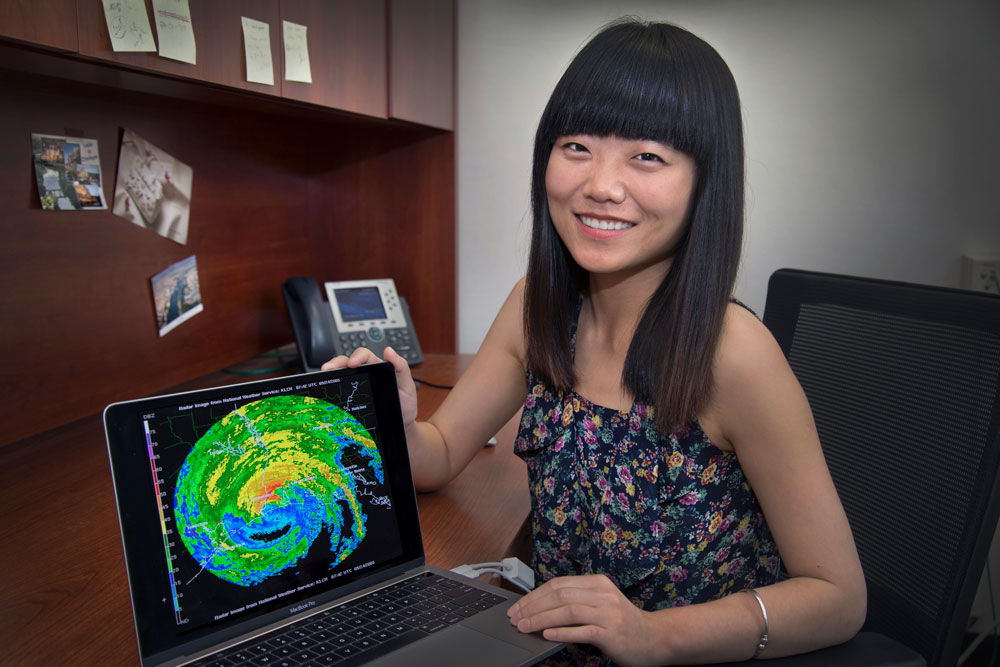Classifying Weather to Tease Out How Aerosols Influence Storms
Published: 21 March 2022
Machine-learning study tracks large-scale weather patterns, providing baseline categories for disentangling how aerosol particles affect storm severity
The original version of this release is available on the Brookhaven National Laboratory website.

A new study used artificial intelligence to analyze 10 years of weather data collected over southeastern Texas to identify three major categories of weather patterns and the continuum of conditions between them. The study, just published in the Journal of Geophysical Research: Atmospheres, will help scientists seeking to understand how aerosols—tiny particles suspended in Earth’s atmosphere—affect the severity of thunderstorms.
Do these tiny particles—emitted in auto exhaust, pollution from refineries and factories, and in natural sources such as sea spray—make thunderstorms worse? It’s possible, said Michael Jensen, a meteorologist at the U.S. Department of Energy’s (DOE) Brookhaven National Laboratory and a contributing author on the paper.
“Aerosols are intricately connected with clouds; they’re the particles around which water molecules condense to make clouds form and grow,” Jensen explained.
As principal investigator for the TRacking Aerosol Convection interactions ExpeRiment (TRACER)—a field campaign taking place in and around Houston, Texas, from October 2021 through September 2022—Jensen is guiding the collection and analysis of data that may answer this question. TRACER uses instruments supplied by DOE’s Atmospheric Radiation Measurement (ARM) user facility to gather measurements of aerosols, weather conditions, and a wide range of other variables.
“During TRACER, we are aiming to determine the influence of aerosols on storms. However, those influences are intertwined with those of the large-scale weather systems (think of high- or low-pressure systems) and local conditions,” Jensen said.
To tease out the effects of aerosols, the scientists have to disentangle those influences.

Dié Wang, an assistant meteorologist at Brookhaven Lab and lead author of the paper looking back at 10 years of data prior to TRACER, explained the approach for doing just that.
“In this study, we used a machine-learning approach to determine the dominant summertime weather condition states in the Houston region,” she explained. “We will use this information in our TRACER analysis and modeling studies by comparing storm characteristics that occur during similar weather states but varying aerosol conditions.”
“That will help us to minimize the differences that are due to the large-scale weather conditions, to help isolate the effects of the aerosols,” she said.
The project is the first step toward fulfilling the goals supported by DOE Early Career funding awarded to Wang in 2021.
The study also provided an opportunity for several students involved in virtual internships at Brookhaven Lab to contribute to the research. Four co-authors were participants in DOE’s Science Undergraduate Laboratory Internship (SULI) program, and one was interning as part of Brookhaven’s High School Research Program (HSRP).
For more information, read the full Brookhaven Lab news release.
Related Links
Keep up with the Atmospheric Observer
Updates on ARM news, events, and opportunities delivered to your inbox
ARM User Profile
ARM welcomes users from all institutions and nations. A free ARM user account is needed to access ARM data.


















